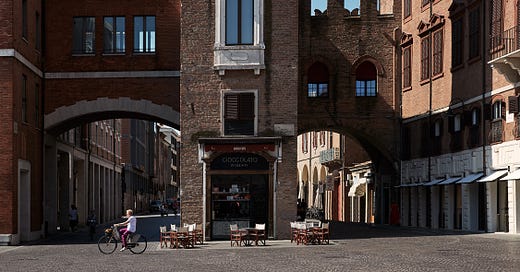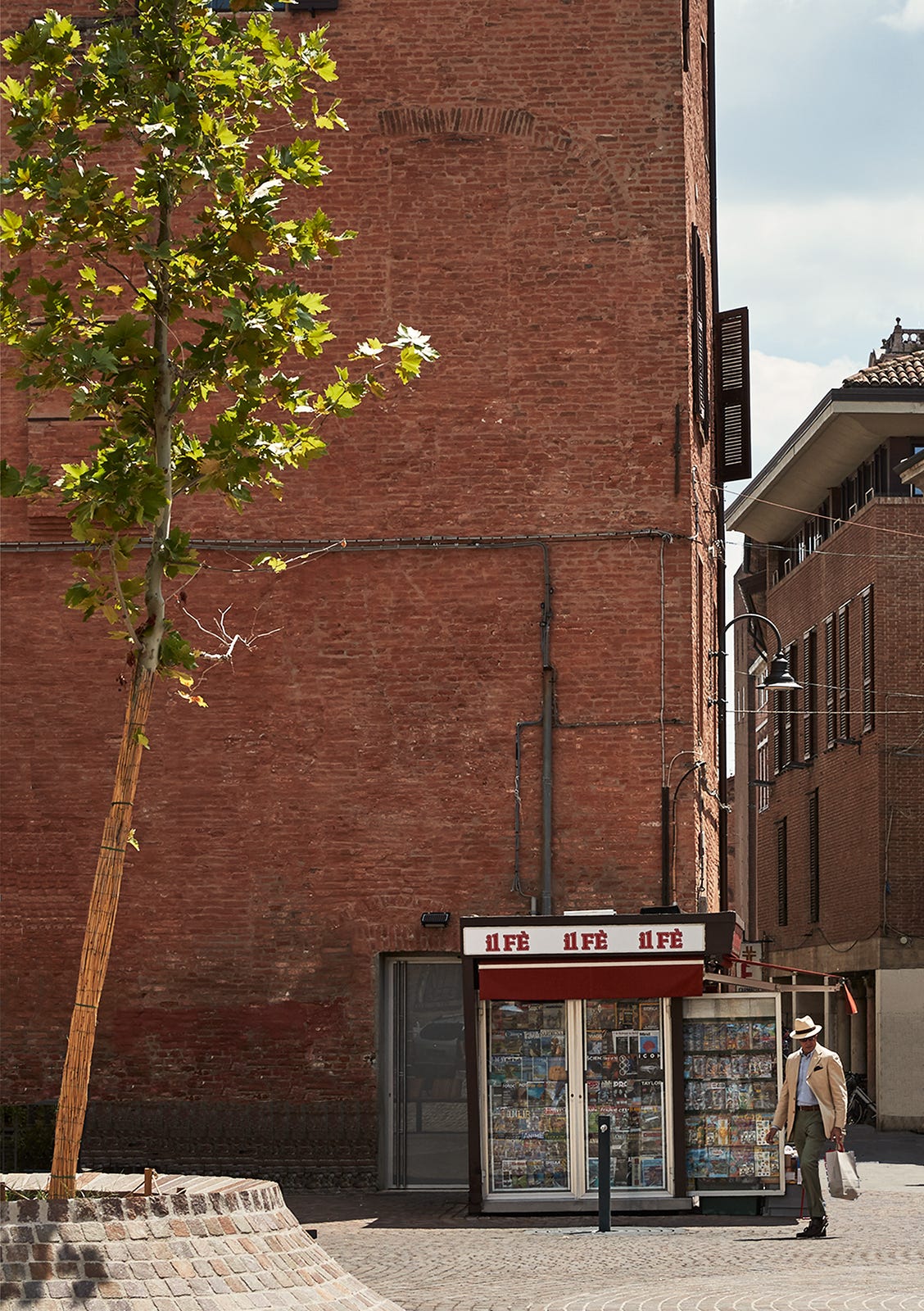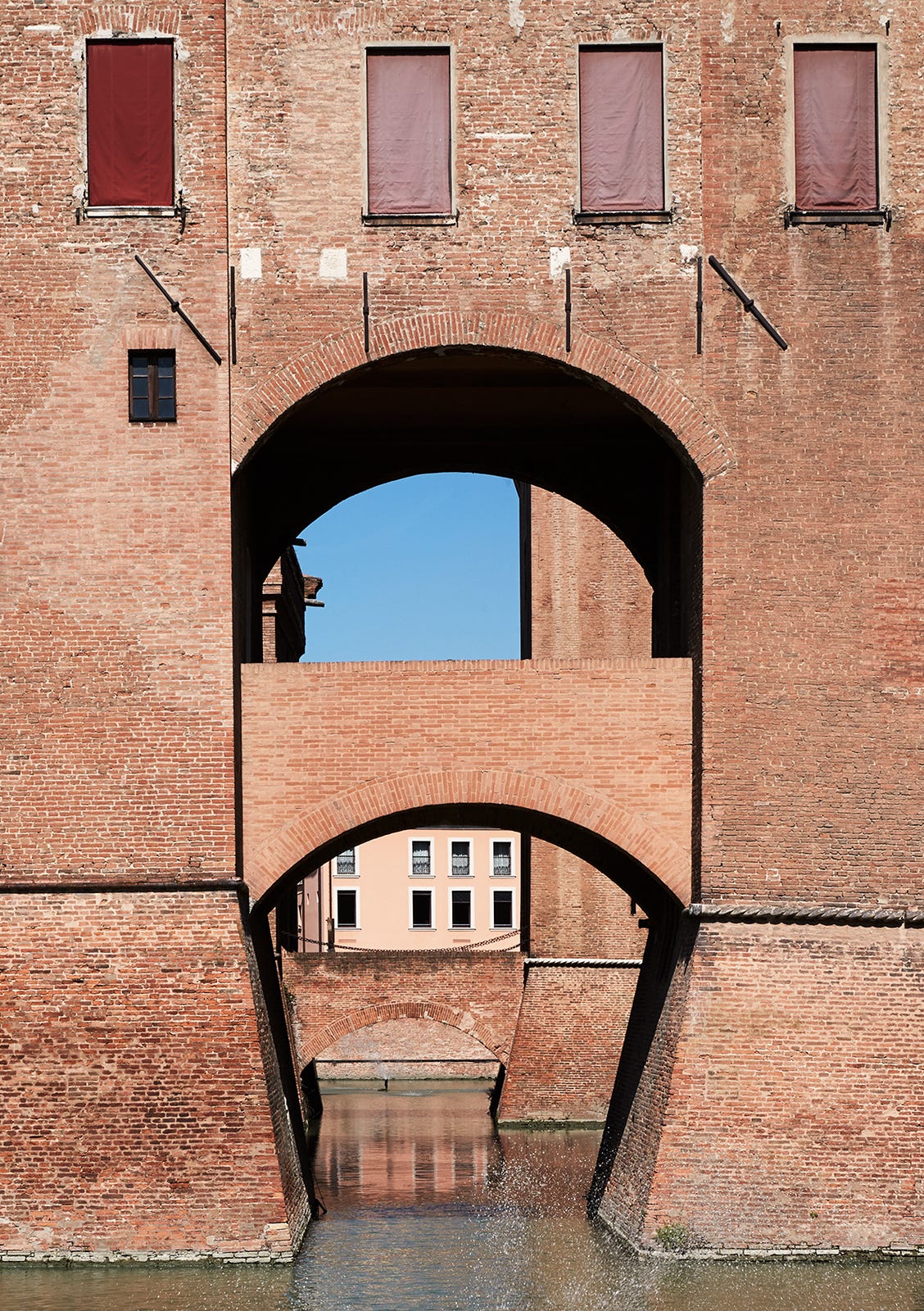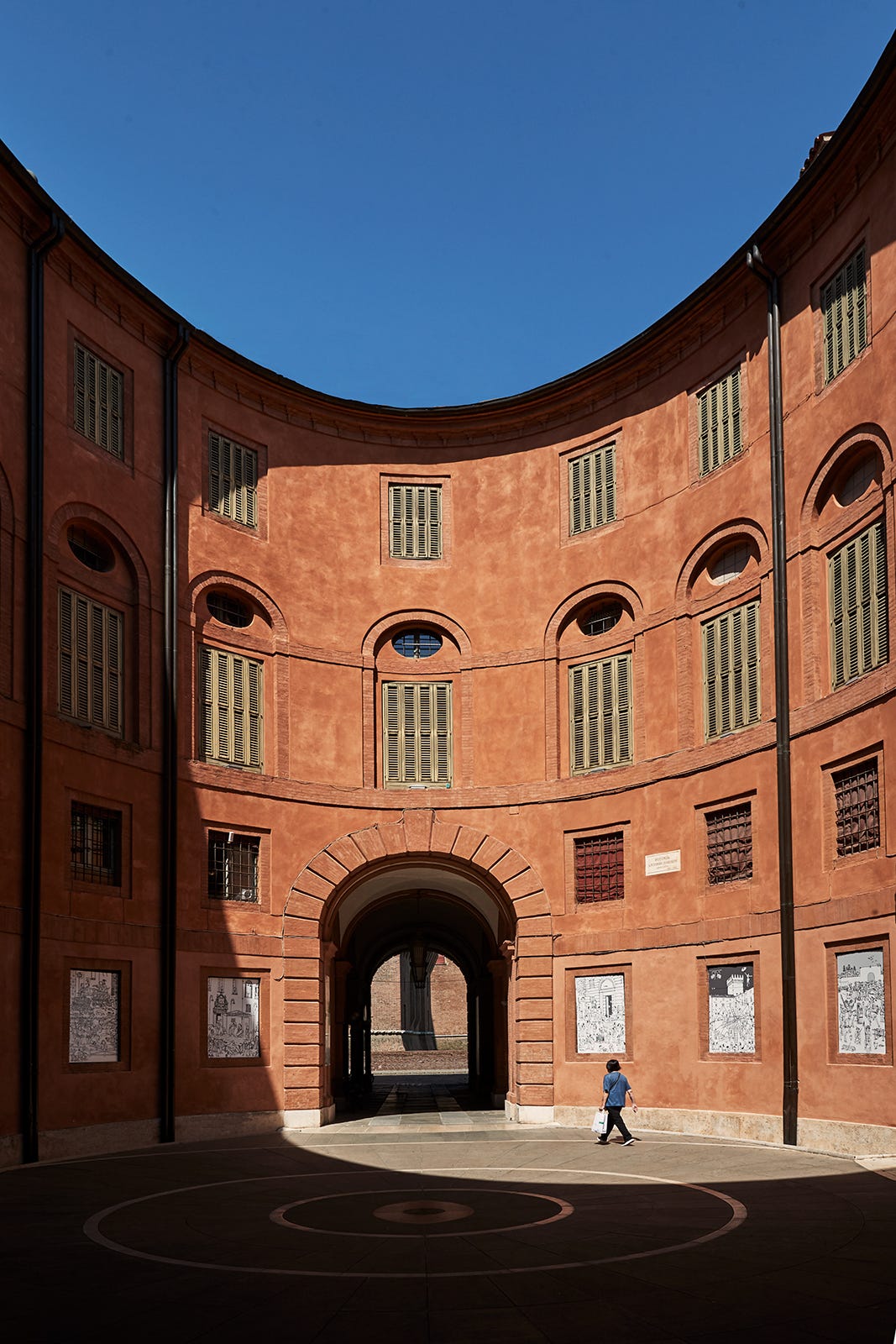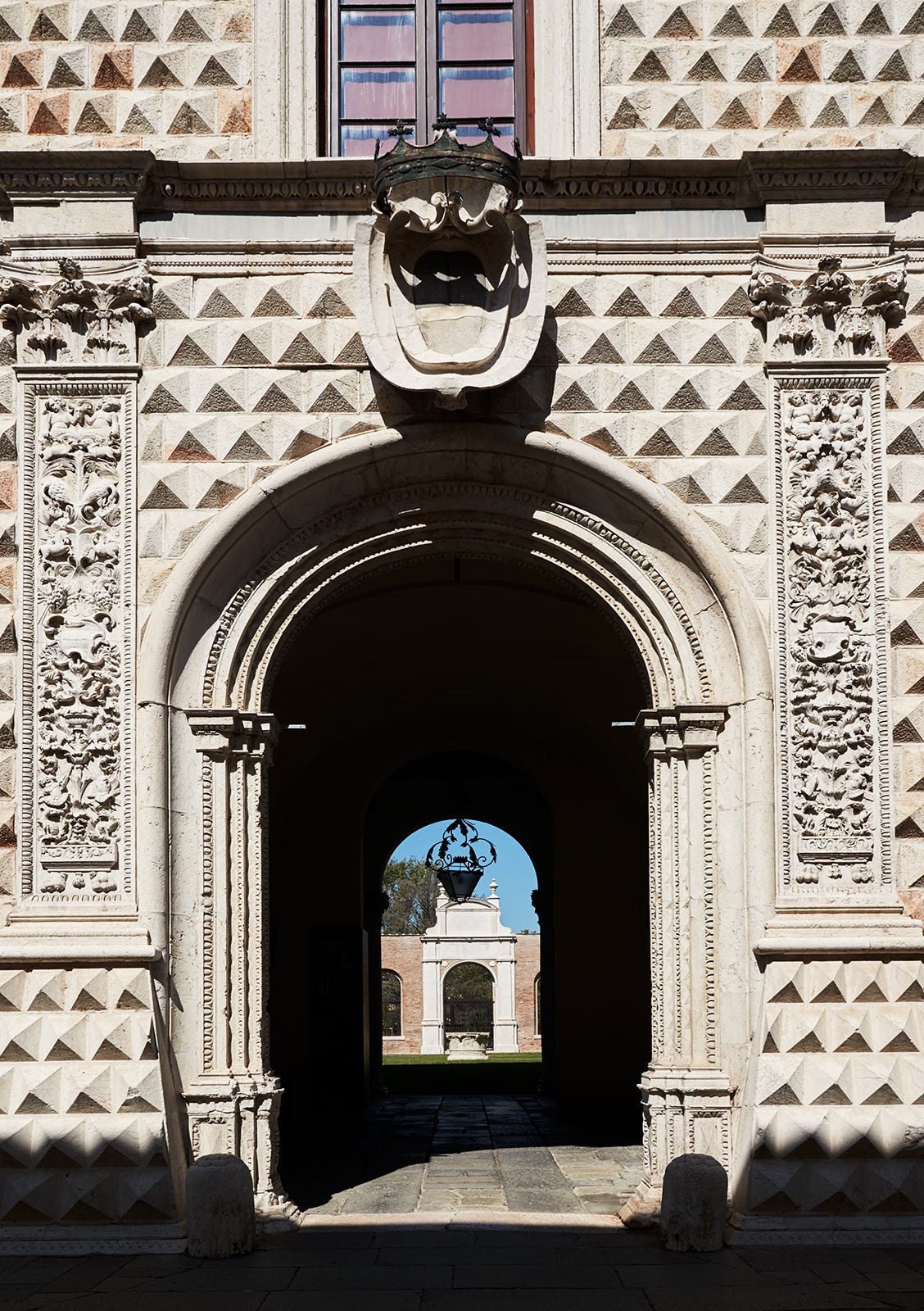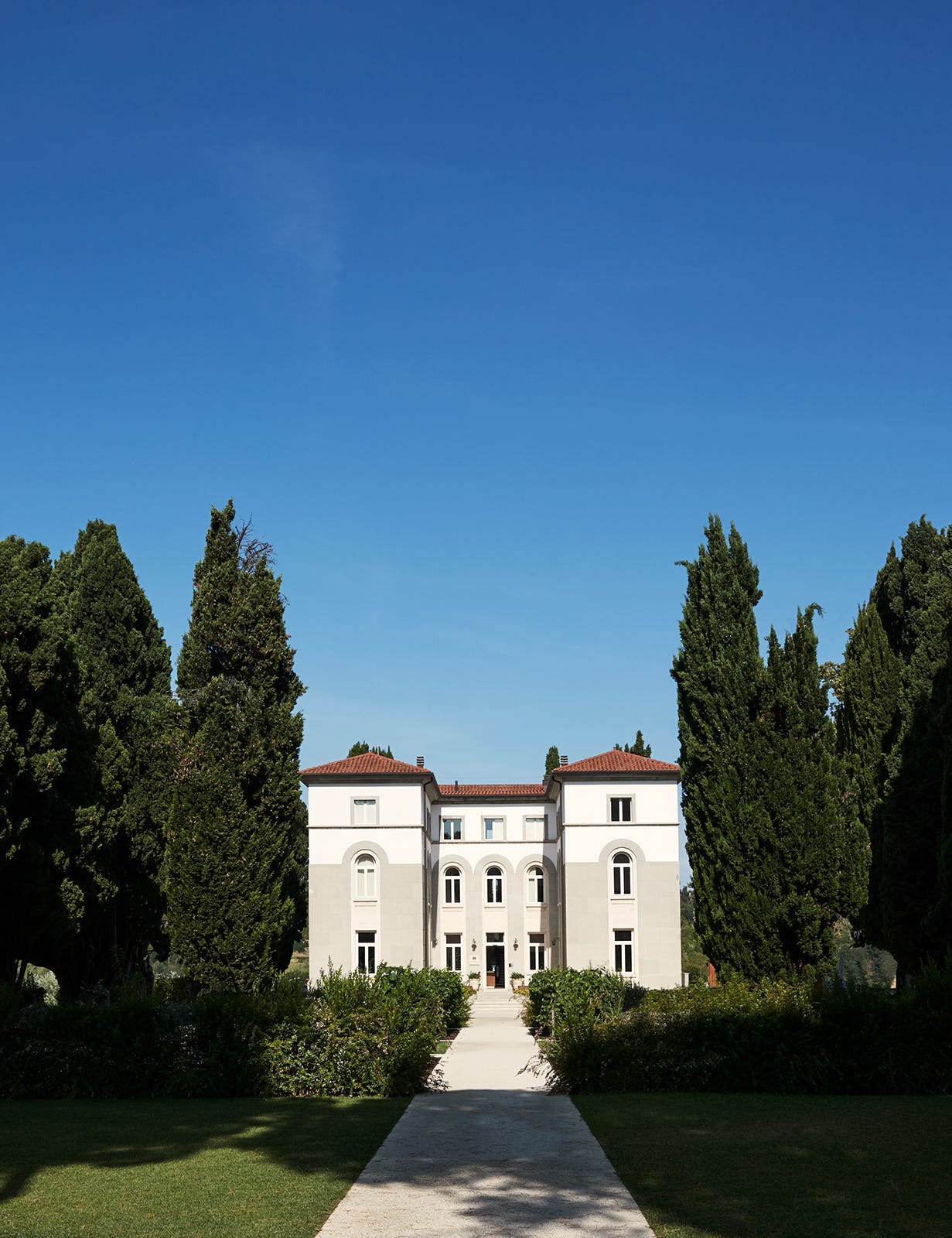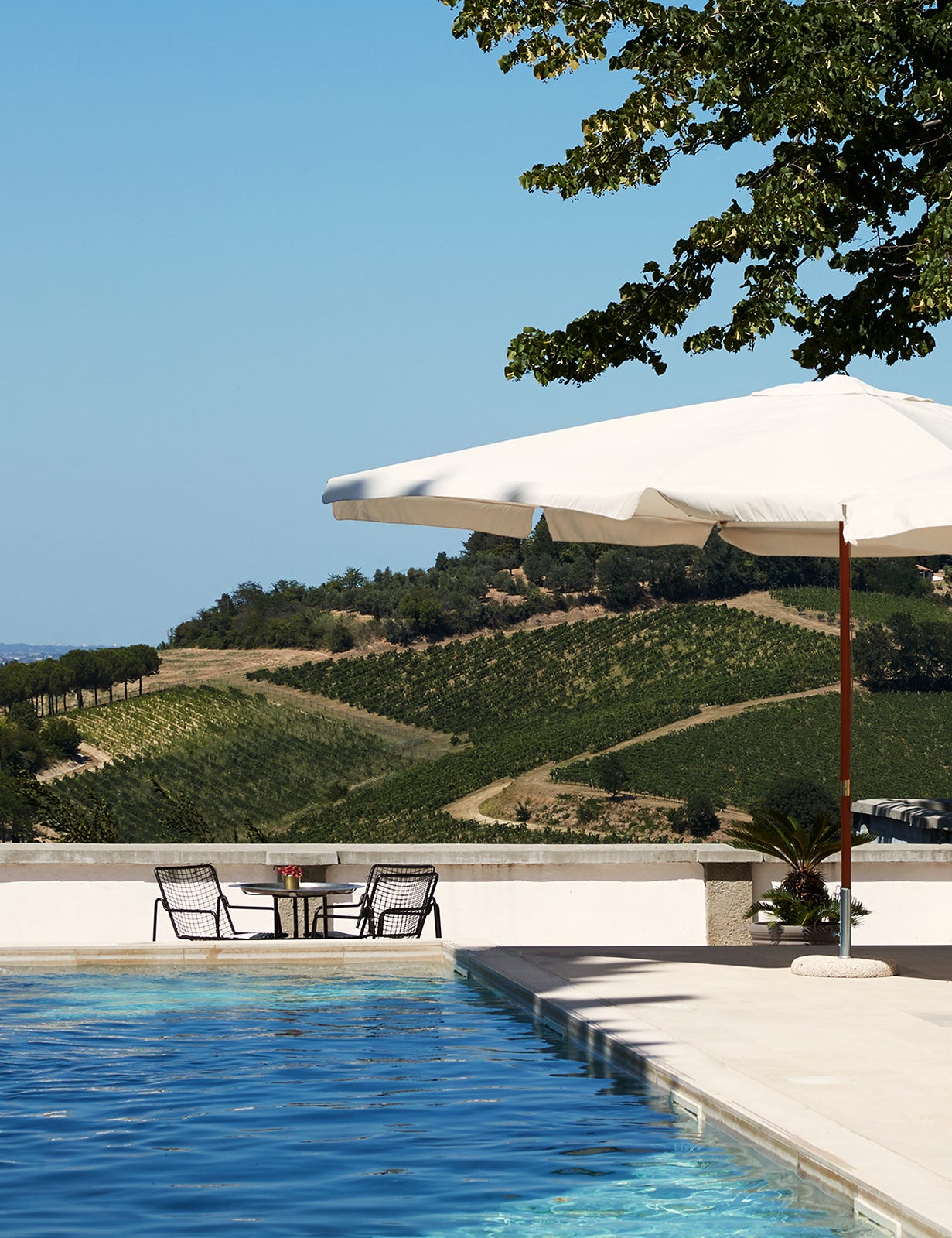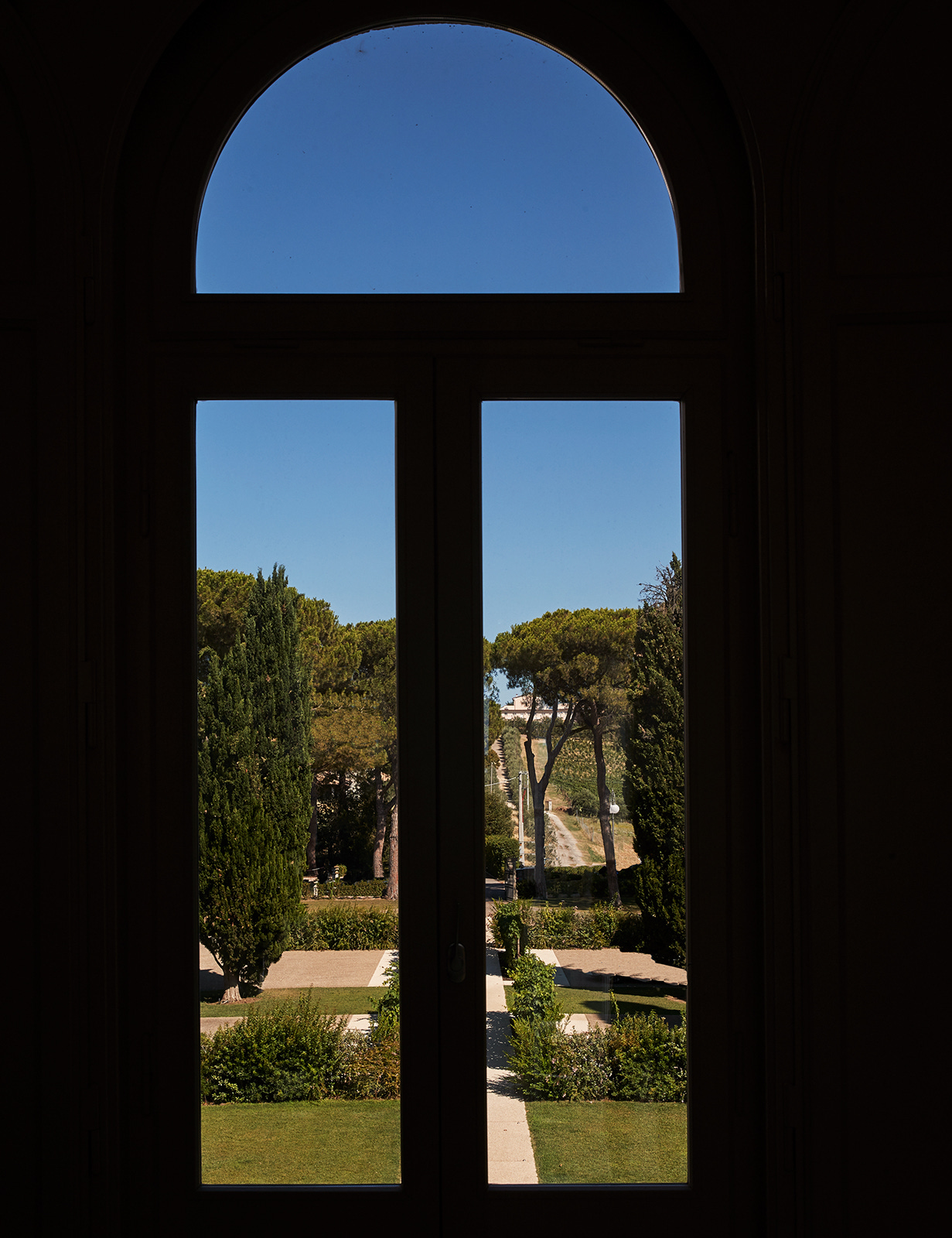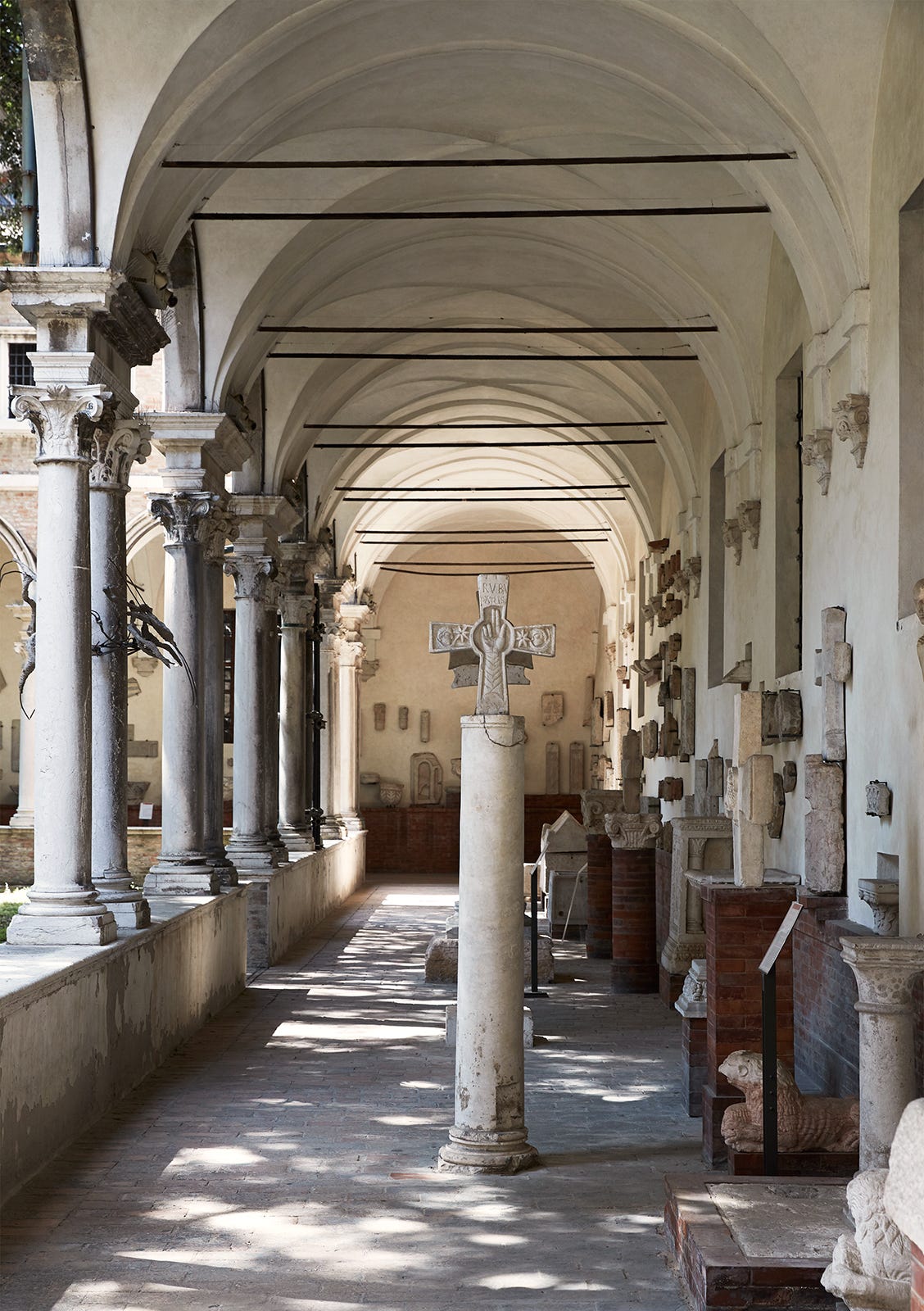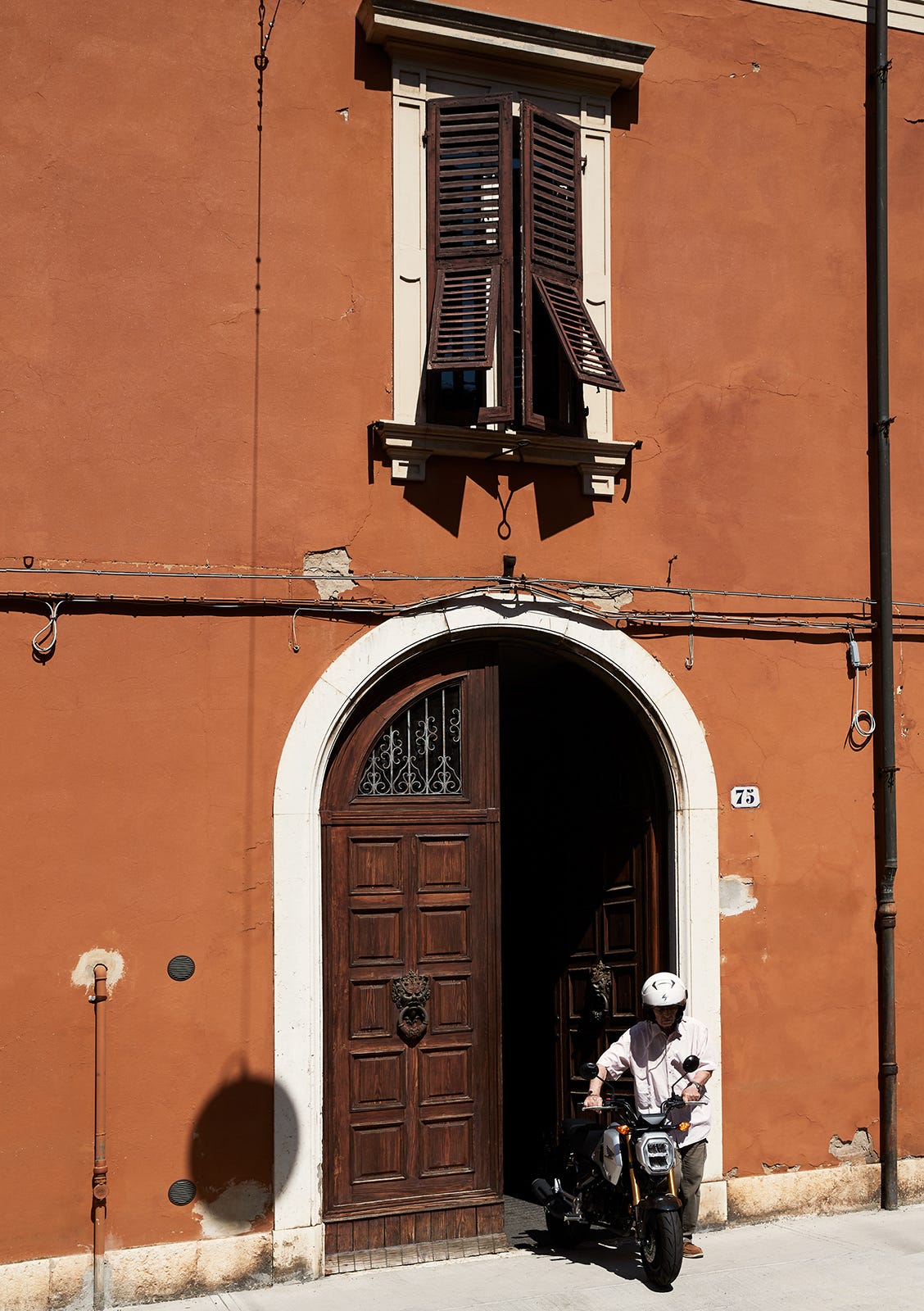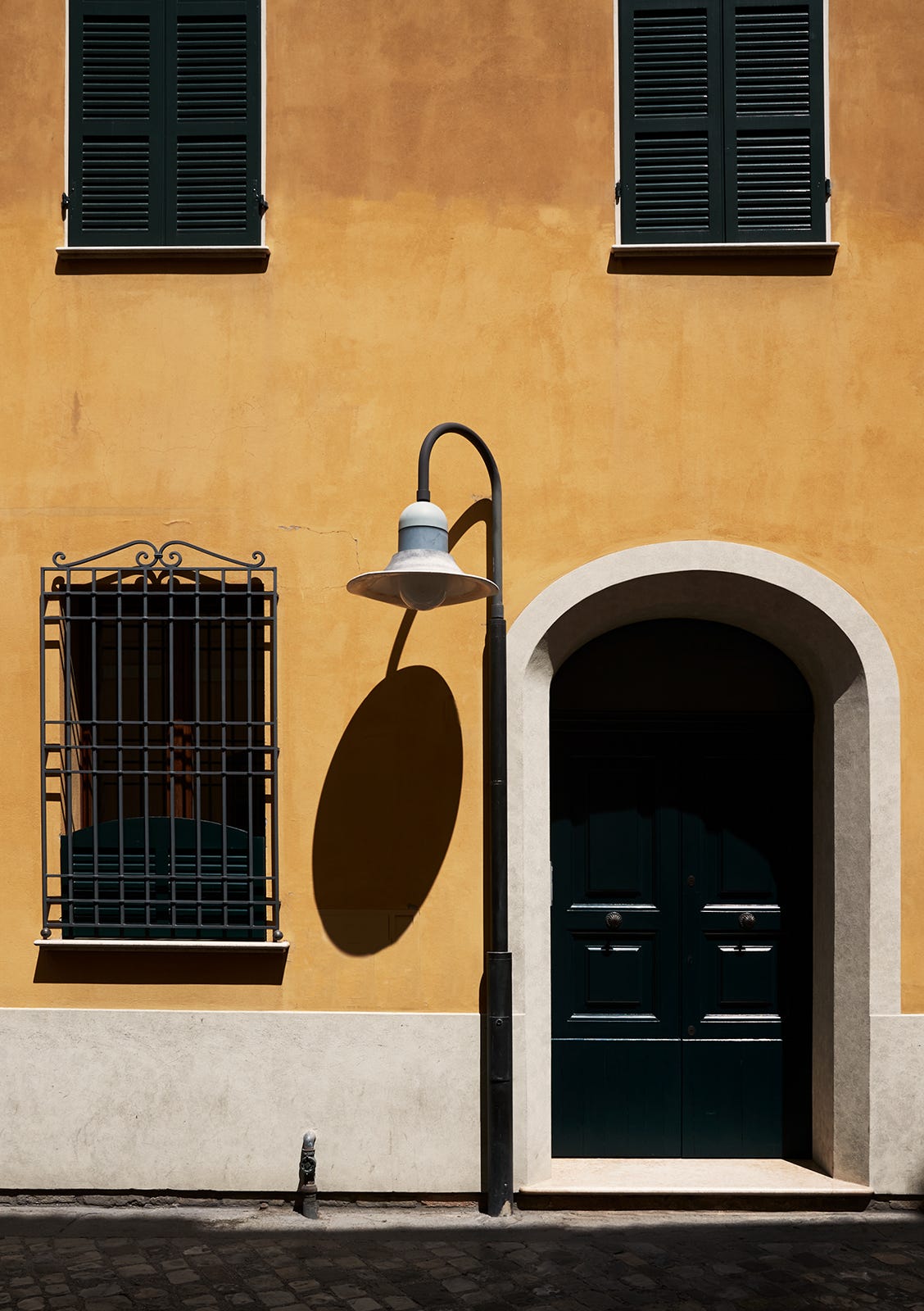A friend visiting us in Grizzana asked what our checklist looked like when we were house hunting: Did we consider the distance to the nearest airport, did we check out the local restaurants, did we investigate the region’s infrastructure? We looked at each other, not really knowing what to respond. A checklist, that sounded like a good idea… but honestly, we just fell in love with the house.
It’s been a summer of trying to uncover the garden’s original structure, doing our best to help the delivery vans to find us in this very remote location, while also not disappearing completely from the face of the earth.
Finally, after two months, we decided it was time to take a break from the renovation and go explore the area. As we live in the mountains, we wanted to see something different, and so we went to Ferrara, not far north of Bologna. We mentioned to a neighbour where we were going. “See it while you can!”, she said, alluding to the fact that Ferrara is below sea level, and is facing a very uncertain future.
Ferrara – A Renaissance Experience
The first thing that intrigued us about Ferrara is that it’s a tourist destination but without tourists. As one of the most significant Renaissance towns of northern Italy, home to the court of the powerful and influential House of Este, it’s known (among Italians) for its beauty and cultural importance.
The town’s architecture greatly benefited from Biagio Rossetti, who was the ducal architect of Ercole d’Este, duke of Ferrara. The Este Castle, in the centre of the town and with its very own moat, has become the symbol of the city. The Cathedral of Saint George from 1138 is considered one of the world’s finest examples of Romanesque architecture. But wherever we went, there were no international tourists. A strange experience in Italy in August, we seemed to be the only non-Italians in town.
The southern district is the town’s oldest, with a myriad of narrow alleys dating back to the Early Middle Ages.
We immediately took a liking to Ferrara, and especially enjoyed its quiet yet proud character. We also appreciated the world’s oldest wine bar, the Antica Enoteca Al Brindisi. In the 15th century, people would come here by boat, but nowadays, it’s in a regular small street. Having been around for five hundred years, with the same concept, must be the epitome of slow culture!
To stay: Villa Monty Banks
After a day in Ferrara, we checked in at the Villa Monty Banks. The name might sound strange as it’s more American-sounding than Italian, but the name has its reason. Monty Banks was born Mario Bianchi (in nearby Cesena) but changed his name when he moved to Hollywood.
One day, while on vacation in his hometown, he stumbled on the villa and bought it as a second home. Today, the elegant 1930s Art Déco mansion has been transformed into a small hotel with eleven rooms.
It has an outdoor swimming pool, a restaurant that serves fruits and vegetables grown in the hotel’s own garden, and offers yoga classes in the garden and wellness treatments in the spa.
As we’re big fans of Italian Art Déo, we loved the architecture, and especially the elegant marble staircase, which is the centre-piece of the villa, both from the outside and inside.
The room was spacious, and they even offered a small bed for the dog! In the mornings, we had breakfast on the terrace overlooking the surrounding hills and the town of Cesena.
The Capital of Mosaics
Villa Monty Banks is close to the Adriatic Sea, but the seaside towns in this area are quite rundown and not particularly charming, so we preferred the swimming pool. Instead of going tot he coast, we visited Ravenna (which is still connected to the sea by the Candiano Canal).
Ravenna is known for its well-preserved late Roman and Byzantine architecture, with eight buildings comprising the town’s UNESCO World Heritage Site. Because of its high concentration of mosaics, it’s known as the “capital of mosaics”.
Ravenna holds an important place in history – this is where Julius Caesar gathered his forces before crossing the Rubicon, and where Octavian (after his battle against Mark Anthony) founded the military harbour of Classis.
Ravenna is a very walkable city, which makes it the perfect destination for a daytrip. Just watch out for the bikes! They have the right of way in the middle of the streets, so walk on the (right) side.
Max Mara was established in Reggio Emilia, and for the past seventy years, they’ve offered chic and comfortable garments to women. Walking around Ferrara and Ravenna, we wondered what’s the hen and what’s the egg when it comes to elegant womenswear in Emilia Romagna. Are women here particularly well dressed because they have access to Max Mara, or was Max Mara founded here because women in this area have an especially great sense of style? There are smartly dressed women everywhere, in loose-fitted cotton dresses, large colourful necklaces, and elegant sun hats, riding their bikes or out for a leisurely stroll with their dog.
To Drink: Villa Papiano
On our way back, we stopped at the Villa Papiano, a biodynamic winery run by four siblings, om the very top of an Apennine mountain. Driving there felt like an adventure, as some of the roads were dangerously close to being completely deteriorated. But the wine more than made up for this – with plenty of minerals from the mountain soil made of marl and sandstone, making it feel like we were drinking pure energy – and also very decently priced.


